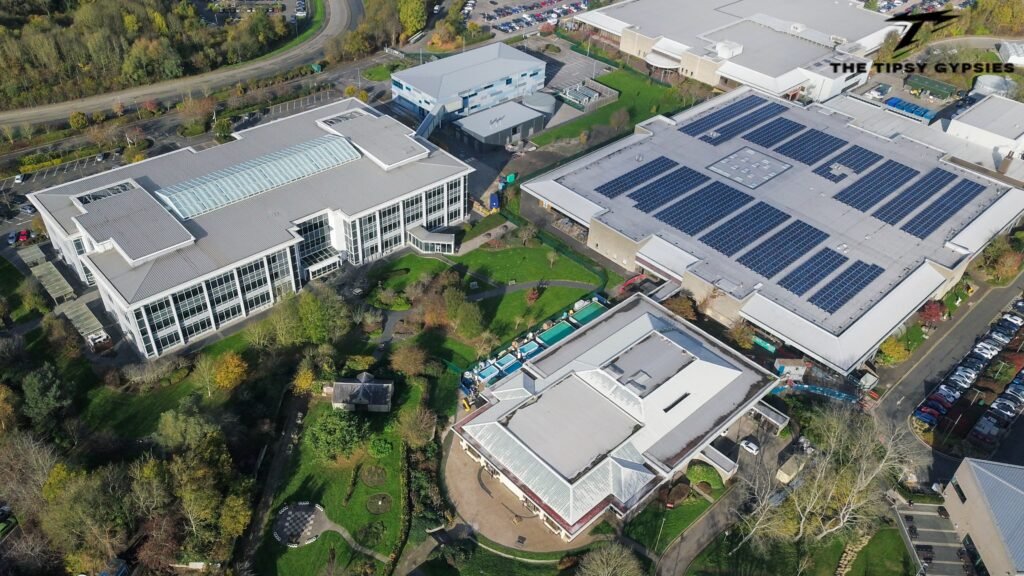HMS Photovoltaik refers to advanced solar power systems that use Hoymiles HMS microinverters to turn sunlight into usable electricity directly at the panel. Instead of relying on one central inverter to manage several panels, HMS microinverters handle power conversion directly at each individual module. This design improves efficiency, boosts performance in partial shade, and allows detailed monitoring of each panel’s output. HMS Photovoltaik is widely used in homes, businesses, and small plug-and-play balcony systems, making renewable energy adoption easier and more flexible for many types of users.
The Advancement and Impact of HMS Photovoltaik in Solar Energy
A shift toward smarter solar technology
Over the last decade, the solar industry has moved from basic centralized setups to intelligent, distributed systems. HMS Photovoltaik represents this new generation, where each solar panel operates with its own power electronics, allowing independent optimization. Even if one panel produces less due to dirt or shade, the others keep performing at peak capacity.
HMS systems are built not only for high energy output but also for durability. Components are engineered to handle harsh weather conditions, from intense summer heat to freezing winters, while still delivering consistent performance.
From rooftops to balconies
One of HMS Photovoltaik’s biggest strengths is its versatility. Large commercial rooftops and residential homes benefit from these systems, but they are also ideal for compact solutions like balcony solar kits. This adaptability opens solar power to renters and small property owners who previously had limited access.
How HMS microinverters work
Module-level conversion
In a standard solar system without microinverters, electricity flows as direct current (DC) from panels into a central inverter. HMS Photovoltaik takes a different approach. Each panel, or small group of panels, has its own HMS microinverter that converts DC to alternating current (AC) right away. This reduces power loss and lets the system monitor and adjust each panel’s performance individually.
MPPT for every panel
HMS microinverters employ panel-level Maximum Power Point Tracking (MPPT), continuously adjusting voltage and current to maximize each module’s efficiency. This means that panels in different sunlight conditions still operate at their highest efficiency without lowering the performance of the entire system.
Key advantages of HMS Photovoltaik
Higher energy yield
Because each panel works independently, shading on one panel does not affect the rest. This is vital for rooftops with chimneys, satellite dishes, or nearby trees that cause partial shading.
Flexible design
HMS Photovoltaik can be installed on many types of surfaces, such as sloped roofs, flat roofs, ground mounts, pergolas, and balcony rails. This flexibility makes it easy to design a system that fits a property’s layout and energy needs.
Detailed monitoring
A major benefit is the ability to monitor energy production in real time. Using platforms like S-Miles Cloud, users can check each panel’s performance from a phone or computer. This helps with troubleshooting and promotes smarter energy use.
Long-term durability
HMS products are made with weather-resistant enclosures and high-quality electronics. They are tested for wind, rain, snow, and extreme temperature swings, ensuring years of reliable service.
Common applications of HMS Photovoltaik
Residential homes
Homeowners use HMS Photovoltaik to lower electricity bills, gain energy independence, and live more sustainably. Whether it’s a full rooftop system or a few panels to supplement grid power, the technology can be scaled to fit different needs.
Commercial properties
Businesses benefit from cost savings and improved public image through solar adoption. HMS systems also make it easier to expand capacity over time without major redesigns.
Balcony and small-scale setups
In regions that allow plug-and-play solar, HMS Photovoltaik lets renters and apartment owners install small systems without major construction. This makes solar power accessible in urban areas with limited roof space.
Steps in installing an HMS Photovoltaik system
Site assessment
A professional assesses your property’s sunlight exposure, roof angle, and available space to design the most efficient setup.
Choosing the right HMS model
Depending on your system size, you may choose two-input models for small arrays or four-input models for larger setups. This also depends on panel output and local grid requirements.
Mounting and wiring
Microinverters are mounted beneath the panels, connected to each module, and wired into the property’s AC distribution.
Connecting to monitoring
The system connects to a Data Transfer Unit (DTU) or uses built-in Wi-Fi for direct connection to the monitoring platform. From there, production can be tracked instantly.
Grid connection and commissioning
The system is connected to the local grid, tested for safety, and approved for operation.
Environmental impact and sustainability
HMS Photovoltaik plays a key role in reducing carbon emissions by replacing fossil fuel-based electricity with clean solar energy. Over its lifetime, a single system can prevent thousands of kilograms of CO₂ emissions. HMS also focuses on using eco-friendly materials and improving manufacturing efficiency to lower the environmental footprint.
By making solar power accessible to more people, including renters, small business owners, and schools, HMS technology supports a broader culture of sustainability. Moving from centralized fossil fuel plants to distributed renewable energy systems also helps stabilize the grid and promote energy fairness.
Real-world success stories
Families in residential areas have used HMS Photovoltaik to power their homes and charge electric vehicles. Small companies have reduced costs and invested their savings back into growth. Schools have added HMS-powered solar arrays to their buildings, integrating renewable energy education into their curriculum.
These examples prove that HMS Photovoltaik is not just technology but a practical tool for empowerment and positive change.
Future developments and innovation
HMS Photovoltaik is expected to integrate smarter energy management tools, such as AI-driven performance optimization and energy storage compatibility. Research is focused on improving microinverter efficiency, increasing product lifespans, and making systems more affordable.
Another exciting direction is the expansion of flexible solar modules for curved roofs or vehicles. This innovation expands solar energy potential, making it viable even in previously impractical locations.
Conclusion
HMS Photovoltaik blends advanced microinverter technology, strong design, and easy-to-use monitoring to make solar power adoption simple and effective. It works for small apartments and large commercial sites, offering dependable performance, energy independence, and real environmental benefits.
By choosing HMS Photovoltaik, you are not only installing a solar system, you are investing in a cleaner, more resilient future. With proven reliability, adaptability, and a commitment to innovation, it is one of the most forward-looking solutions in the renewable energy market today.
Frequently Asked Questions ( FAQs )
What is HMS Photovoltaik?
HMS Photovoltaik is a solar energy system that uses Hoymiles HMS microinverters to convert sunlight into electricity at the panel level. This setup improves efficiency, works better in shade, and allows real-time monitoring of each panel’s output.
How does HMS Photovoltaik work?
HMS Photovoltaik uses microinverters attached to each solar panel to convert direct current (DC) into alternating current (AC) immediately. Each panel operates independently with its own Maximum Power Point Tracking (MPPT) to maximize energy production.
What are the main benefits of HMS Photovoltaik?
The main benefits include higher energy yield, better performance in shaded conditions, flexible installation on various surfaces, detailed real-time monitoring, and long-term durability in harsh weather.
Can HMS Photovoltaik be installed in apartments or balconies?
Yes. In regions that allow plug-and-play solar, HMS Photovoltaik can be installed on balconies or small spaces. This makes it possible for renters and apartment owners to generate their own clean electricity.
How long does an HMS Photovoltaik system last?
An HMS Photovoltaik system can last 20 to 25 years or more with proper maintenance. The microinverters and panels are designed to withstand wind, rain, snow, and extreme temperatures while maintaining high efficiency.






